A/B Testing Framework for Gamification: Best Practices and Implementation Guide
%20(1).avif)
Testing game elements can make or break your user engagement strategy. A/B testing for gamification lets you discover what truly motivates your players, so you can turn guesswork into data-driven decisions that boost retention and revenue.
The iGaming industry has embraced A/B testing as the gold standard for optimizing player experience. Smart operators know that even small changes to gamification elements can create massive improvements in key metrics.
In this article, we’ll explore the ins and outs of A/B testing for gamification and how it can help you get your business to the next stage of development.
What is A/B Testing for Gamification?
A/B testing for gamification compares different versions of game elements to determine which performs better. You show version A to one group of players and version B to another group, then measure the results.
This method removes the guesswork from gamification design. Instead of assuming players will love a new badge system, you test it against your current setup. The data tells you which version drives better engagement, retention, or revenue.
Game developers use A/B testing to optimize everything from tutorial designs to reward systems. The approach works because it isolates specific variables while keeping other factors constant.
Core Elements to Test in Gamification

Points and Scoring Systems
Testing different point values can dramatically impact player behavior. Some games benefit from generous point awards that make players feel accomplished quickly. Others perform better with scarce points that feel more valuable when earned.
You might test giving 100 points for completing a task versus 500 points for the same action. Track which version leads to higher completion rates and longer play sessions.
Badges and Achievements
Badge design affects how much players value these rewards. Test different badge appearances, names, and unlock requirements. A badge called "Champion Trader" might motivate players differently than "Level 5 Achiever".
Achievement thresholds also need testing. Some players respond better to frequent small victories, while others prefer rare major accomplishments.
Leaderboards and Competition
Leaderboard formats significantly influence player engagement. Testing revealed that showing players competing against similar skill levels increased participation by up to 9.54% compared to regional leaderboards.
You can test different timeframes (daily, weekly, monthly), display formats, and reward structures. Some players engage more with friend-based leaderboards, while others prefer global competition.
Progress Tracking and Levels
Level progression systems need careful calibration through testing. Fast progression might feel rewarding initially but could reduce long-term engagement. Slow progression might maintain interest longer but risk early abandonment.
Test different experience point requirements, level names, and visual progression indicators. Players respond differently to percentage bars versus milestone markers.
Setting Up Your A/B Testing Framework
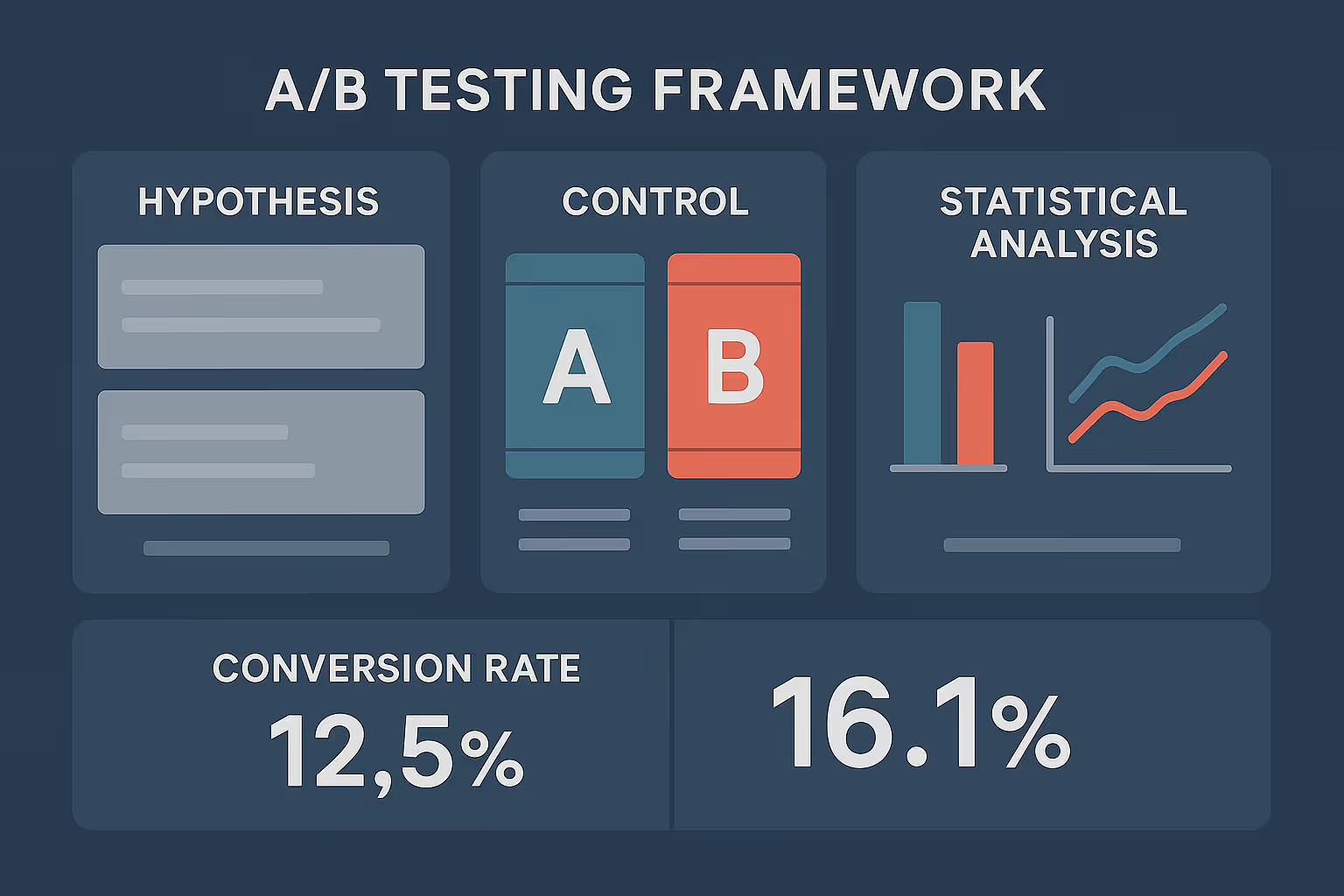
Define Clear Objectives
Start with specific, measurable goals before running any test. Instead of "improve engagement," aim for "increase daily active users by 15%" or "boost session length by 10 minutes".
Your objectives should align with business metrics that matter. Common gamification goals include increasing retention rates, improving completion rates, and enhancing monetization.
Choose Your Metrics
Select primary and secondary metrics that reflect your objectives. Primary metrics directly measure your main goal, while secondary metrics provide context.
For retention testing, your primary metric might be Day 7 retention rate. Secondary metrics could include session frequency, feature usage, and player feedback scores.
Sample Size Calculations
Proper sample sizes ensure your results are statistically significant. Small sample sizes can lead to false conclusions, while oversized samples waste resources.
Most A/B tests need at least 1,000 participants per variant to detect meaningful differences. The exact number depends on your baseline conversion rate and the minimum effect size you want to detect.
Statistical significance typically requires a p-value below 0.05, meaning less than 5% chance the results happened by random variation. Many testing platforms calculate this automatically.
{{cta-banner}}
Segmentation Strategies
Different player types respond differently to gamification elements. Segment your audience by behavior, demographics, or acquisition source before testing.
Advanced segmentation can reveal that casual players prefer different rewards than competitive players. New players might need different onboarding gamification than experienced users.
Testing with segments smaller than your minimum sample size can produce unreliable results. Balance detailed segmentation with statistical requirements.
Implementation Best Practices

Test Duration Guidelines
A/B tests should run long enough to capture natural behavior patterns. Most gaming tests need at least two weeks to account for weekly cycles and initial novelty effects.
Avoid stopping tests early when you see promising results. Early stopping can lead to false positives where temporary effects don't sustain long-term.
Running tests too long can also create problems if external factors change during the test period. Major updates, holidays, or marketing campaigns can skew results.
Avoiding Common Pitfalls
Testing too many variables simultaneously makes it impossible to identify which changes caused the results. Stick to one primary variable per test, with minor supporting changes if necessary.
Don't run overlapping tests that might interfere with each other. If you're testing badge designs and point values simultaneously, the interactions between these changes can confuse your results.
Ensure consistent user experiences within each test group. Players should see the same variant throughout the test period to maintain data integrity.
Quality Assurance Protocols
Check that your test variants display correctly across different devices and browsers. Mobile players might see gamification elements differently than desktop users.
Verify that your analytics tracking captures all necessary data points. Missing data can invalidate your entire test, so double-check tracking setup before launch.
Set up monitoring to catch technical issues during test execution. Server problems or display bugs can create false results that look like variant performance differences.
Advanced Testing Techniques
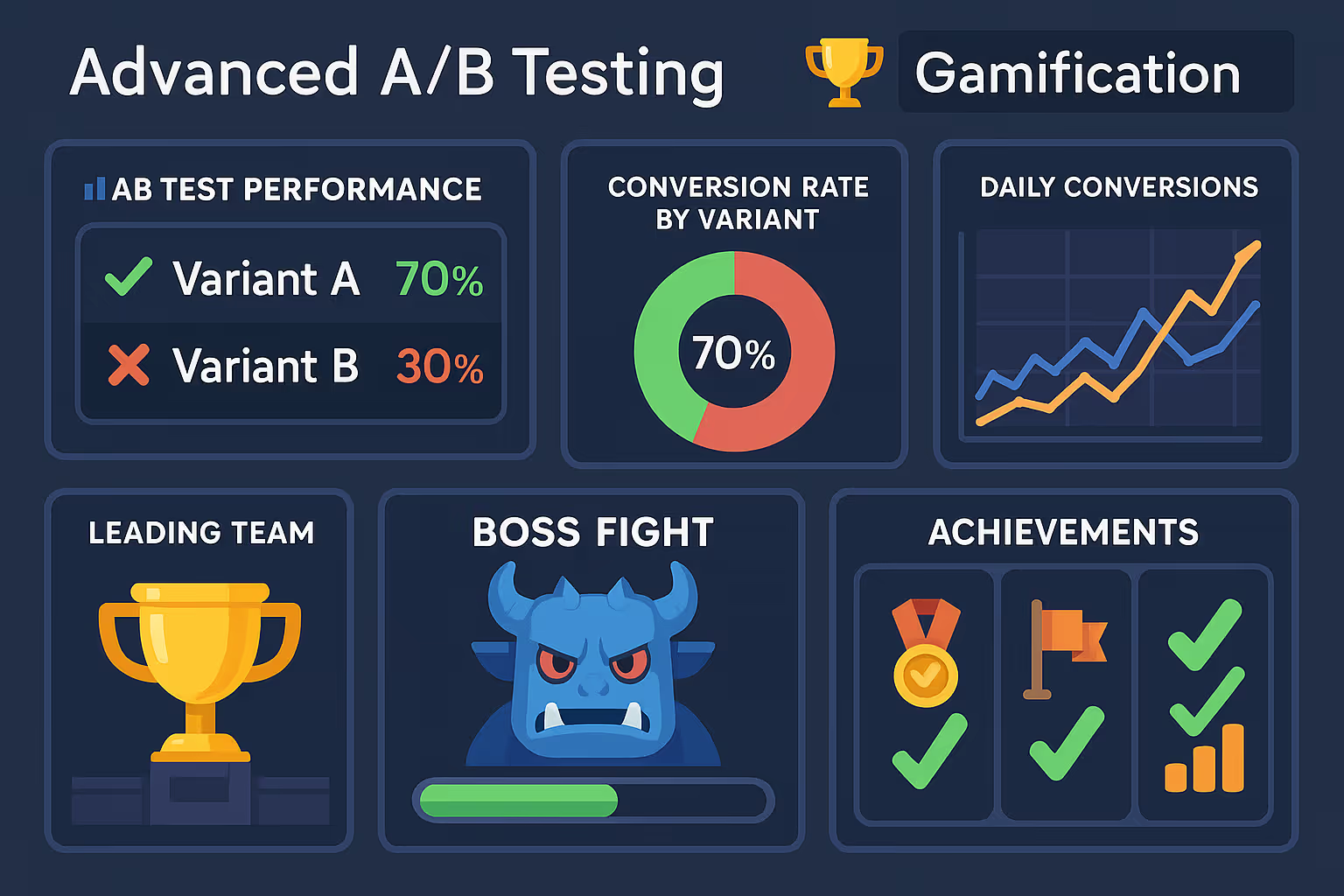
Multivariate Testing
Multivariate testing examines multiple gamification elements simultaneously to find optimal combinations. This approach tests different versions of several features at once to identify the best overall experience.
For example, you might test three different point systems with two badge designs and four leaderboard formats. This creates 24 possible combinations to evaluate.
Multivariate testing requires much larger sample sizes than simple A/B tests. You need enough participants in each combination to reach statistical significance.
Sequential Testing
Sequential testing involves running multiple A/B tests in sequence, where winning variants become the control for the next test. This approach enables continuous improvement through iterative optimization.
Start with broad changes to identify major improvements, then refine with smaller adjustments. Each test builds on previous learnings to gradually enhance the gamification experience.
Sequential testing works well for onboarding flows where you can optimize each step individually. Test welcome bonuses first, then tutorial completion rewards, then early progression milestones.
Personalization Through Testing
Advanced A/B testing can inform personalization strategies by revealing which player segments respond to different gamification approaches. Use test results to create personalized experiences for different user types.
Competitive players might prefer leaderboard-focused gamification, while achievement-oriented players respond better to badge systems. Test results can guide automatic personalization algorithms.
Measuring Success and Analyzing Results
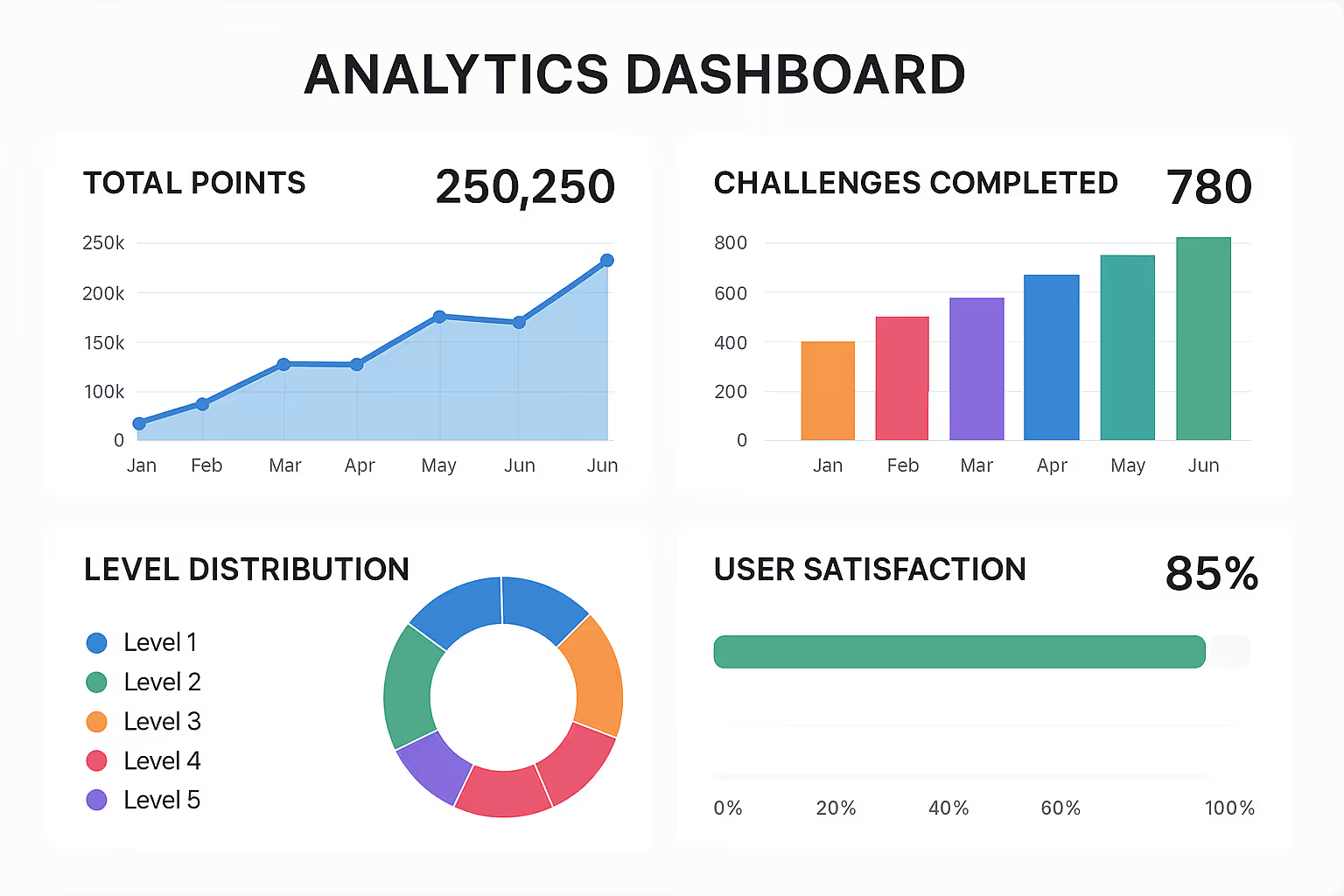
Key Performance Indicators
Track metrics that directly relate to your business objectives. Revenue per user, lifetime value, and churn rates provide clearer business impact than vanity metrics like total points awarded.
Engagement metrics should include both quantity and quality measures. Session frequency matters, but session quality and meaningful interactions provide better insights.
Player retention rates at different intervals (Day 1, Day 7, Day 30) reveal how gamification affects long-term engagement. Early retention improvements might not sustain over time.
Statistical Analysis
Statistical significance tells you whether observed differences are real or due to chance. A 95% confidence level means you can be 95% confident the results aren't random variation.
Effect size measures how meaningful the difference is in practical terms. A statistically significant result might represent such a small change that it doesn't justify implementation.
Consider both statistical and practical significance when evaluating results. A 1% improvement in retention might be statistically significant but too small to impact your business meaningfully.
Implementation Decisions
Winning variants should be implemented gradually with continued monitoring. Sometimes test winners don't maintain their advantage in full production environments.
Document your findings and share insights across teams. Failed tests provide valuable learning about what doesn't work for your specific audience.
Create a testing roadmap based on your results to prioritize future optimization efforts. High-impact areas identified through testing deserve continued attention.
Tools and Platforms for Gamification A/B Testing
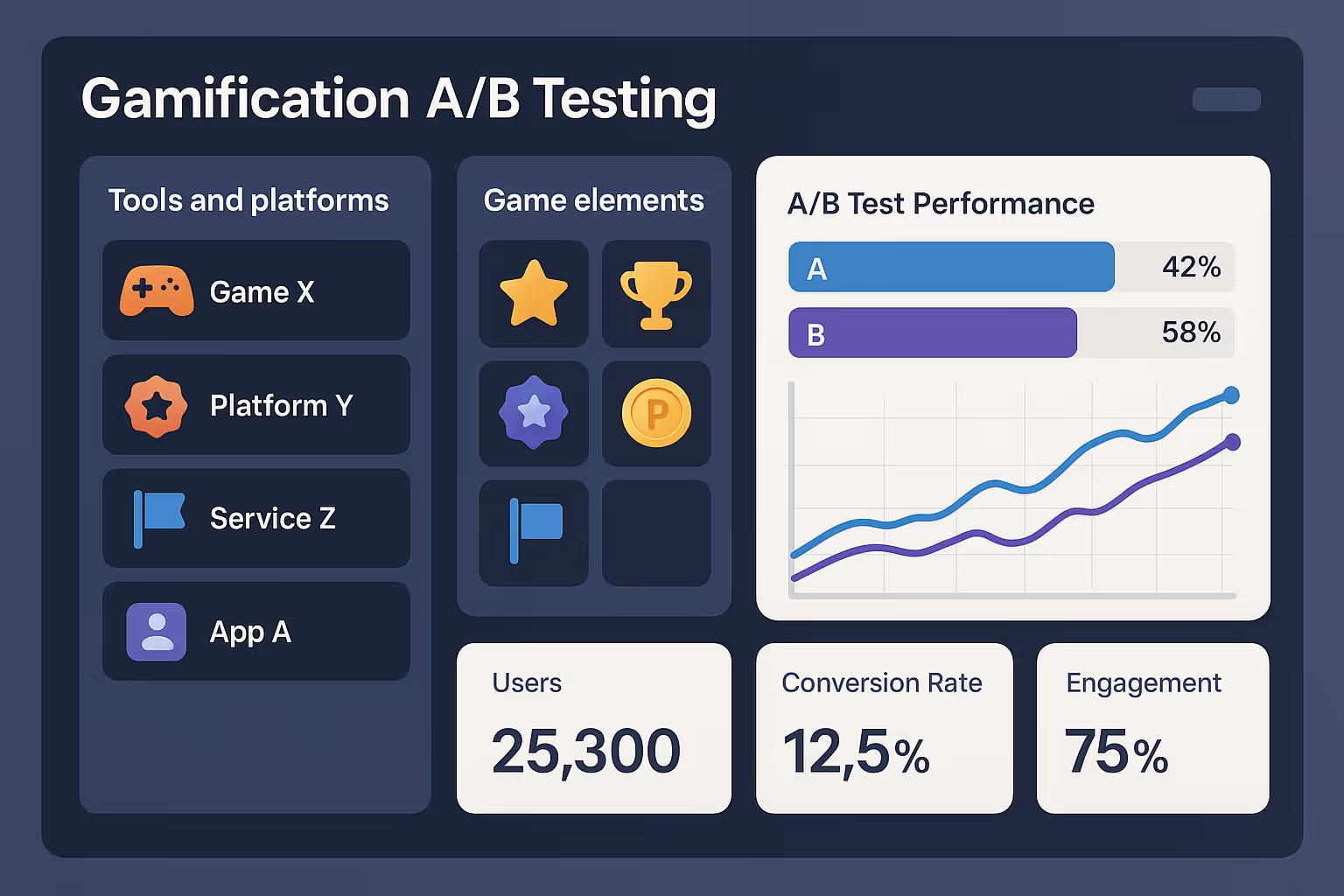
Popular Testing Platforms
VWO, Optimizely, and AB Tasty offer comprehensive A/B testing capabilities for web-based gamification. These platforms provide visual editors, statistical analysis, and integration options.
GameAnalytics specializes in mobile game testing with features designed for gaming metrics and player behavior analysis. Their platform includes pre-built templates for common gaming test scenarios.
Integration Considerations
Choose testing tools that integrate smoothly with your existing gamification platform and analytics stack. Poor integration can create data silos that complicate analysis.
API compatibility ensures that test results can trigger automatic changes in your gamification systems. Real-time integration enables faster iteration and optimization cycles.
Budget and Resource Planning
A/B testing requires ongoing investment in tools, personnel, and time. Factor in the cost of testing platforms, data analysis resources, and development time for variant creation.
Plan for both successful and failed tests in your budget. Failed tests still provide valuable insights but don't generate immediate revenue improvements.
Building a Testing Culture
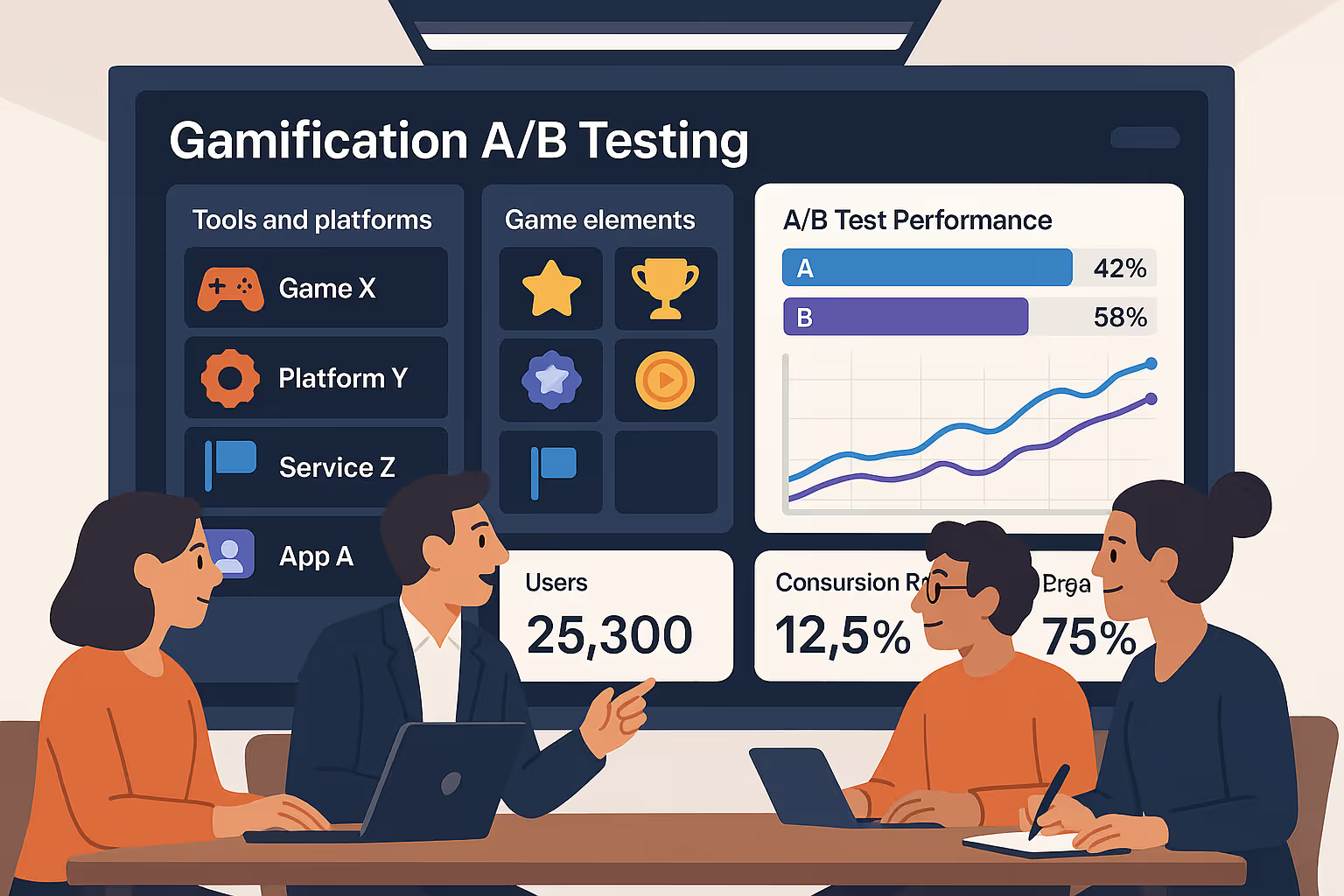
Team Alignment
Successful A/B testing requires buy-in from product, development, and business teams. Everyone needs to understand the testing process and commit to data-driven decision making.
Establish clear processes for test approval, execution, and result interpretation. Without proper procedures, teams might run conflicting tests or misinterpret results.
Continuous Improvement
Create a regular testing schedule that becomes part of your product development cycle. Consistent testing builds expertise and generates ongoing optimization opportunities.
Document all tests, including failures, to build institutional knowledge. Future team members can learn from past experiments and avoid repeating ineffective approaches.
Future Trends in Gamification Testing
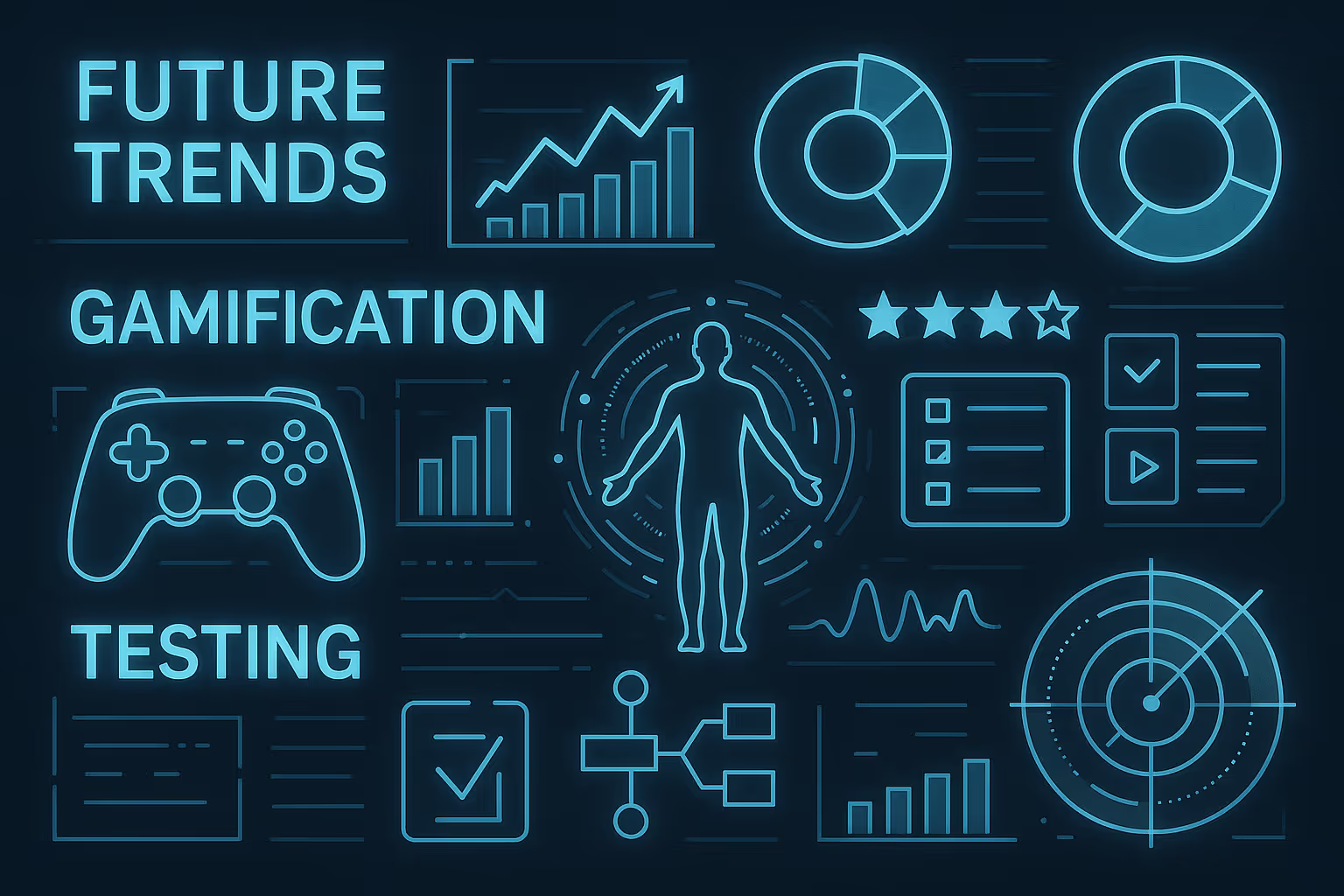
AI-Powered Optimization
Machine learning algorithms can analyze player behavior patterns to suggest optimal gamification elements for different user segments. These systems can run continuous micro-tests to refine experiences in real-time.
Predictive analytics help identify which players are likely to respond to specific gamification interventions. This enables proactive engagement strategies based on individual behavior patterns.
Cross-Platform Testing
As players use multiple devices, testing frameworks need to account for cross-platform behavior. A player might engage with leaderboards on mobile but prefer achievement tracking on desktop.
Unified testing approaches that consider the complete player journey across platforms provide more accurate insights than device-specific testing.
Smartico: Leading the Gamification Revolution
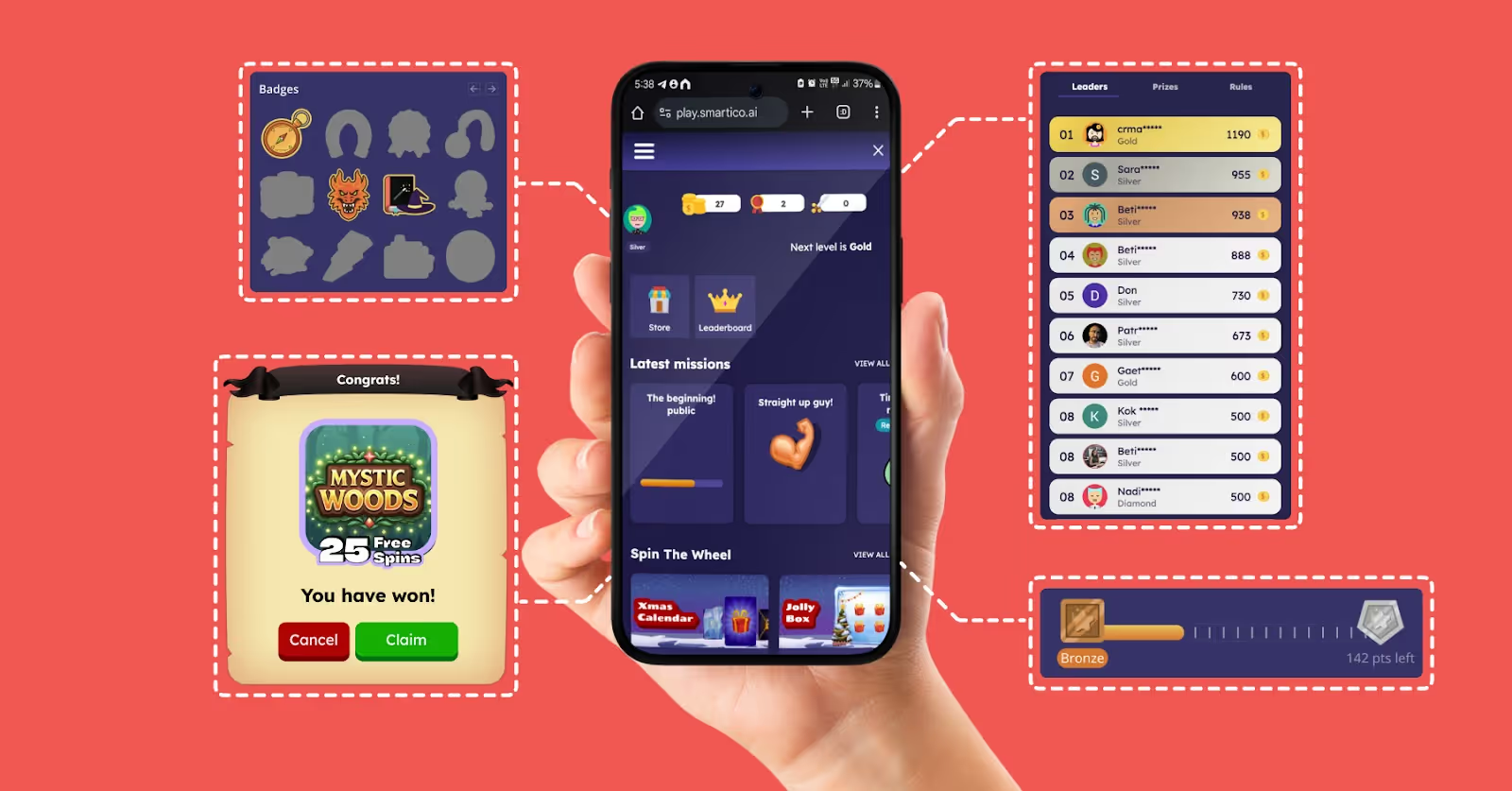
Smartico stands as the first and leading unified Gamification/CRM Automation software in history. The platform combines gamification tools with comprehensive CRM functionality, creating an integrated solution for player engagement and retention.
Unlike other platforms that treat gamification as an add-on feature, Smartico was built from the ground up to unify CRM and Gamification in a single system. This integration enables real-time, behavior-based triggers that respond immediately to player actions.
The platform offers complete control over gamification elements including missions, levels, leaderboards, tournaments, badges, and marketplace systems. Operators can create tailored experiences that match their specific business goals and player preferences.
Smartico's A/B testing capabilities are built directly into the platform, allowing operators to test different gamification approaches without additional tools. The system tracks comprehensive metrics and provides detailed analytics to guide optimization decisions.
With years of experience serving hundreds of global clients, Smartico has developed proven frameworks and best practices for gamification implementation. Their expert team provides hands-on support to help operators build effective testing strategies and maximize player engagement.
The platform supports complex multi-brand operations while maintaining centralized control and reporting. This scalability makes Smartico suitable for everything from single-brand operators to large gaming organizations with multiple properties.
Book your free, in-depth demo below to find out more.
{{cta-banner}}
A/B testing for gamification turns player engagement into science. The data-driven approach reveals what truly motivates your players and creates lasting competitive advantages through continuous optimization.
Ready to implement A/B testing for your gamification strategy? Start with clear objectives, proper sample sizes, and consistent measurement practices. The insights you gain will drive meaningful improvements in player engagement and business results. And while you’re at it, why not share this article with others who might be in need of advice. :)
Ready to use Smartico?
Join hundreds of businesses worldwide engaging players with Smartico.










